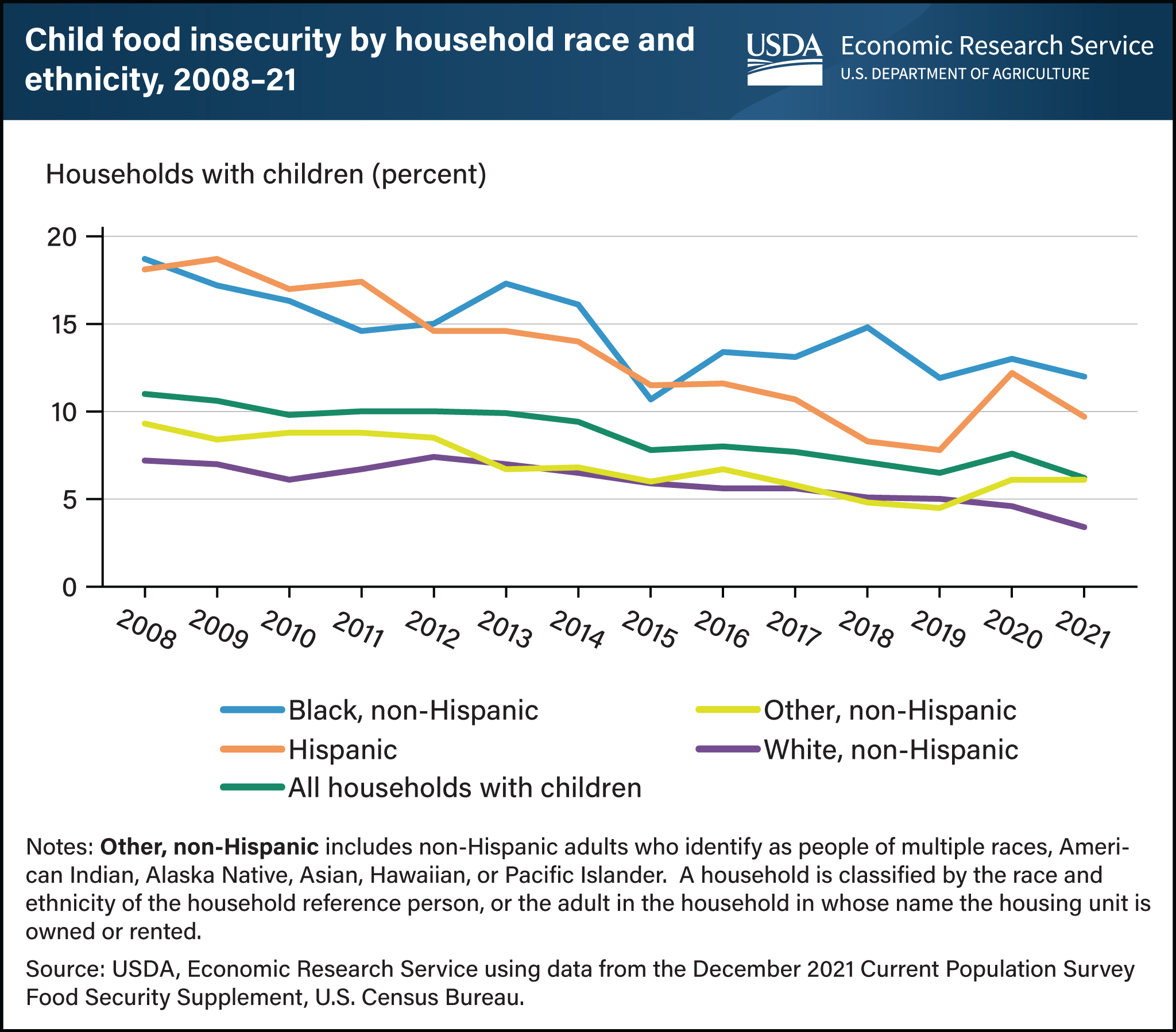Child food insecurity declined significantly among Hispanic households with children in 2021
- by Laura J. Hales
- 1/3/2023

Households with food insecurity among children are defined as those that were unable at times to provide adequate, nutritious food for their children because of a lack of resources. In 2021, food insecurity among children showed an overall statistically significant decline for U.S. households with children. A household is classified by the race and ethnicity of the household reference person, or the adult in whose name the housing unit is owned or rented. The prevalence rates of child food insecurity for Hispanic and Black, non-Hispanic households with children historically have been higher than the rate for all households with children, a trend that continued in 2021. For households with children headed by Hispanic reference persons, food insecurity among children fell to 9.7 percent from 12.2 percent in 2020, a statistically significant decline. For Black, non-Hispanic households with children, the 12 percent rate of food insecurity among children in 2021 was not significantly different from the 13 percent reported in 2020. Food insecurity among children in households with White, non-Hispanic reference persons also had a significant decline. Households that fall into the Other, non-Hispanic category are headed by reference persons that identify as Native American, Asian American, multiple-race American, or other. Other, non-Hispanic households experienced food insecurity rates among children near the national average in 2021 and not significantly different from 2020. This chart appears in USDA, Economic Research Service’s Interactive Charts and Highlights.


